Abstract
Energy expenditure varies among people, independent of body size and composition, and persons with a "low" metabolic rate seem to be at higher risk of gaining weight. To assess the importance of skeletal muscle metabolism as a determinant of metabolic rate, 24-h energy expenditure, basal metabolic rate (BMR), and sleeping metabolic rate (SMR) were measured by indirect calorimetry in 14 subjects (7 males, 7 females; 30 +/- 6 yr [mean +/- SD]; 79.1 +/- 17.3 kg; 22 +/- 7% body fat), and compared to forearm oxygen uptake. Values of energy expenditure were adjusted for individual differences in fat-free mass, fat mass, age, and sex. Adjusted BMR and SMR, expressed as deviations from predicted values, correlated with forearm resting oxygen uptake (ml O2/liter forearm) (r = 0.72, P less than 0.005 and r = 0.53, P = 0.05, respectively). These findings suggest that differences in resting muscle metabolism account for part of the variance in metabolic rate among individuals and may play a role in the pathogenesis of obesity.
Full text
PDF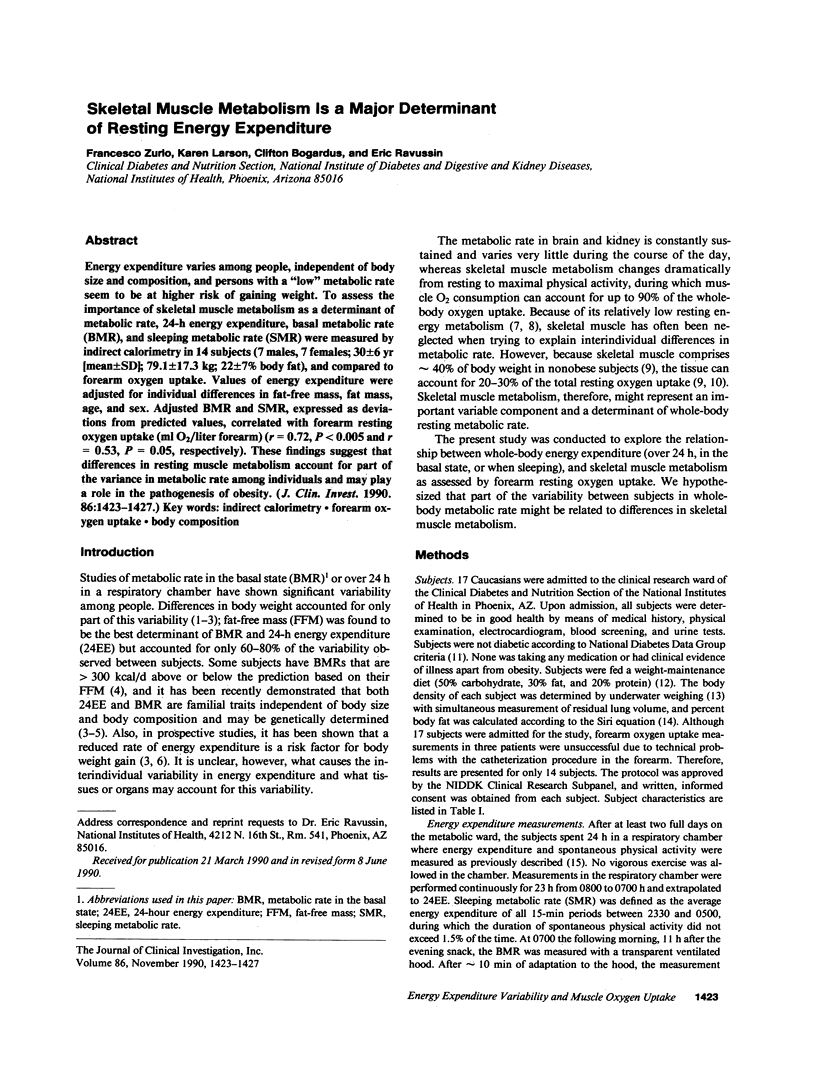
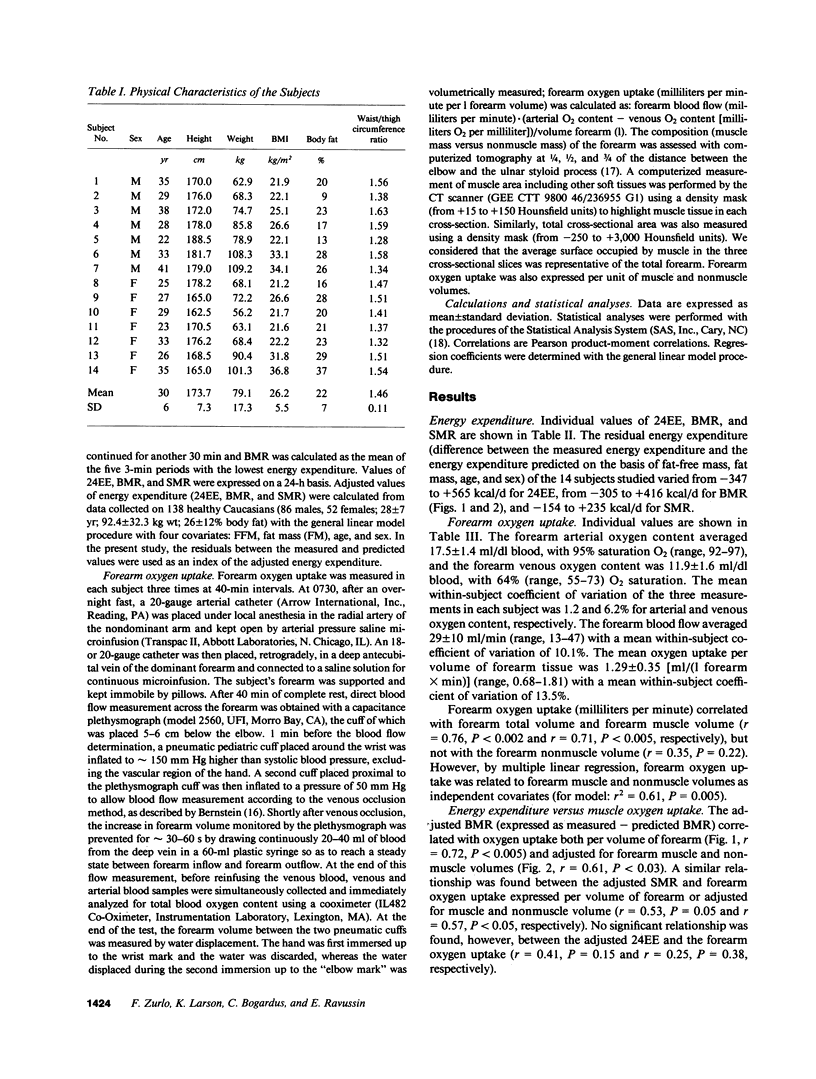
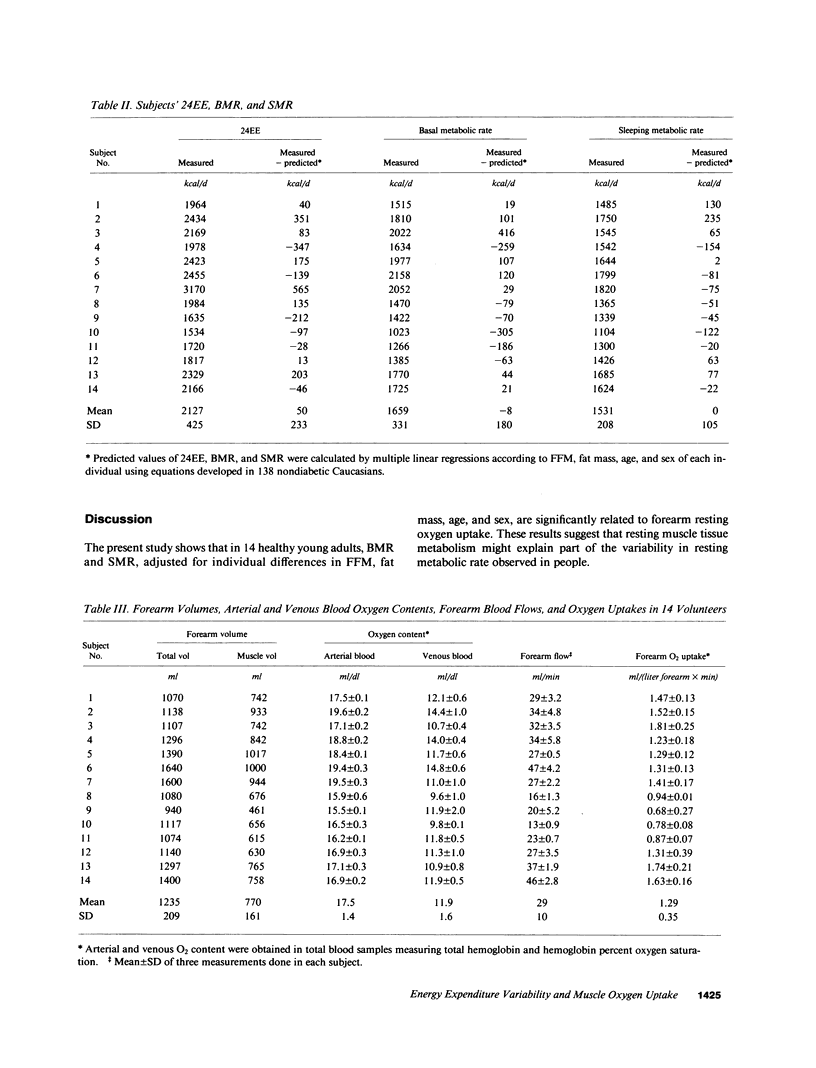
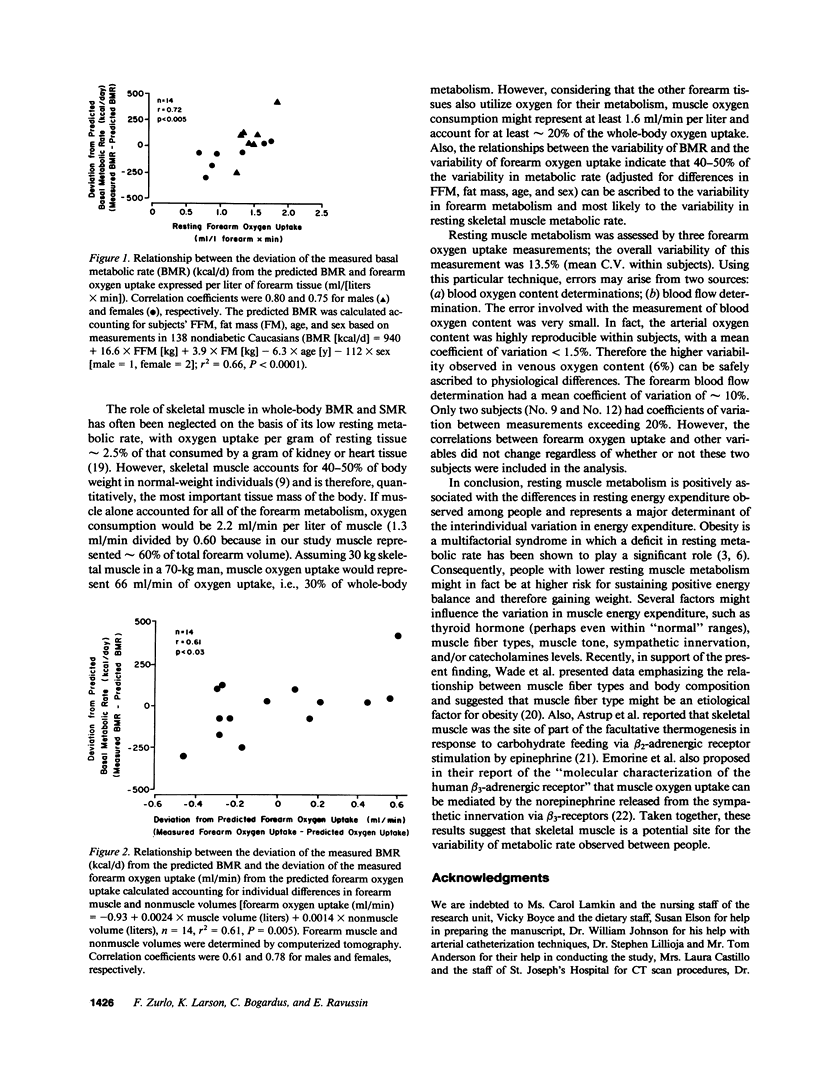
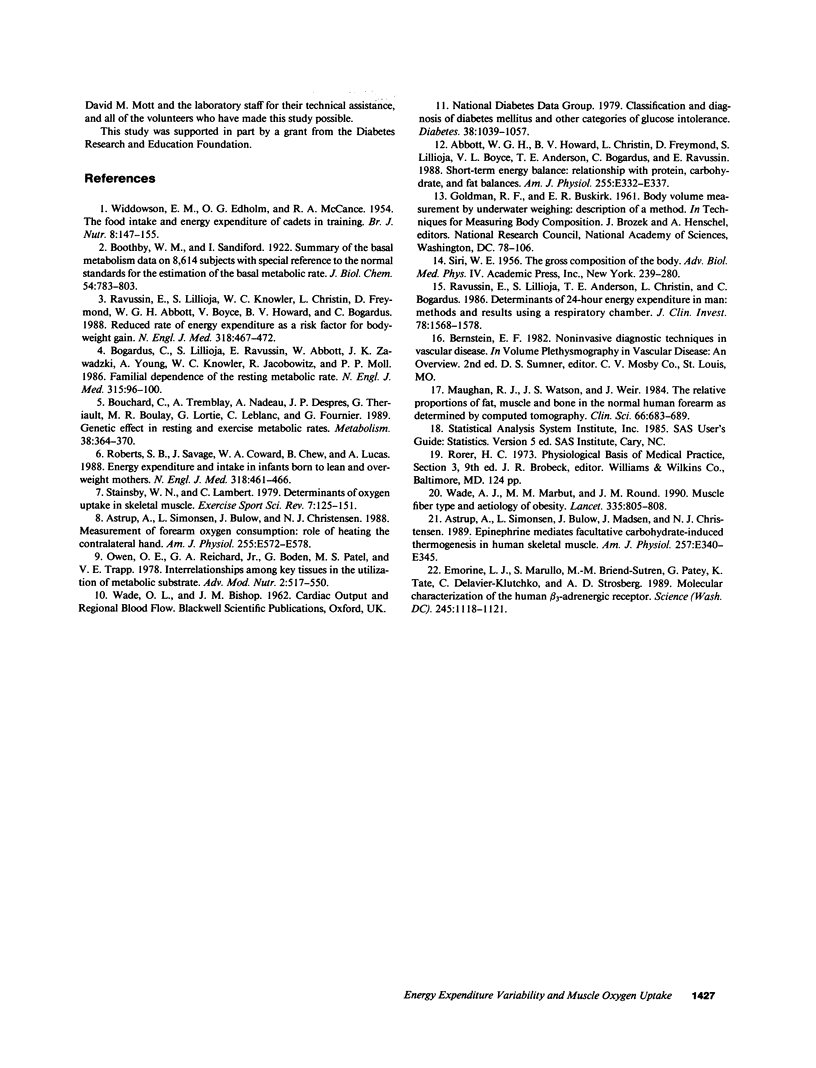
Selected References
These references are in PubMed. This may not be the complete list of references from this article.
- Abbott W. G., Howard B. V., Christin L., Freymond D., Lillioja S., Boyce V. L., Anderson T. E., Bogardus C., Ravussin E. Short-term energy balance: relationship with protein, carbohydrate, and fat balances. Am J Physiol. 1988 Sep;255(3 Pt 1):E332–E337. doi: 10.1152/ajpendo.1988.255.3.E332. [DOI] [PubMed] [Google Scholar]
- Astrup A., Simonsen L., Bülow J., Christensen N. J. Measurement of forearm oxygen consumption: role of heating the contralateral hand. Am J Physiol. 1988 Oct;255(4 Pt 1):E572–E578. doi: 10.1152/ajpendo.1988.255.4.E572. [DOI] [PubMed] [Google Scholar]
- Astrup A., Simonsen L., Bülow J., Madsen J., Christensen N. J. Epinephrine mediates facultative carbohydrate-induced thermogenesis in human skeletal muscle. Am J Physiol. 1989 Sep;257(3 Pt 1):E340–E345. doi: 10.1152/ajpendo.1989.257.3.E340. [DOI] [PubMed] [Google Scholar]
- Bogardus C., Lillioja S., Ravussin E., Abbott W., Zawadzki J. K., Young A., Knowler W. C., Jacobowitz R., Moll P. P. Familial dependence of the resting metabolic rate. N Engl J Med. 1986 Jul 10;315(2):96–100. doi: 10.1056/NEJM198607103150205. [DOI] [PubMed] [Google Scholar]
- Bouchard C., Tremblay A., Nadeau A., Després J. P., Thériault G., Boulay M. R., Lortie G., Leblanc C., Fournier G. Genetic effect in resting and exercise metabolic rates. Metabolism. 1989 Apr;38(4):364–370. doi: 10.1016/0026-0495(89)90126-1. [DOI] [PubMed] [Google Scholar]
- Emorine L. J., Marullo S., Briend-Sutren M. M., Patey G., Tate K., Delavier-Klutchko C., Strosberg A. D. Molecular characterization of the human beta 3-adrenergic receptor. Science. 1989 Sep 8;245(4922):1118–1121. doi: 10.1126/science.2570461. [DOI] [PubMed] [Google Scholar]
- Maughan R. J., Watson J. S., Weir J. The relative proportions of fat, muscle and bone in the normal human forearm as determined by computed tomography. Clin Sci (Lond) 1984 Jun;66(6):683–689. doi: 10.1042/cs0660683. [DOI] [PubMed] [Google Scholar]
- Ravussin E., Lillioja S., Anderson T. E., Christin L., Bogardus C. Determinants of 24-hour energy expenditure in man. Methods and results using a respiratory chamber. J Clin Invest. 1986 Dec;78(6):1568–1578. doi: 10.1172/JCI112749. [DOI] [PMC free article] [PubMed] [Google Scholar]
- Ravussin E., Lillioja S., Knowler W. C., Christin L., Freymond D., Abbott W. G., Boyce V., Howard B. V., Bogardus C. Reduced rate of energy expenditure as a risk factor for body-weight gain. N Engl J Med. 1988 Feb 25;318(8):467–472. doi: 10.1056/NEJM198802253180802. [DOI] [PubMed] [Google Scholar]
- Roberts S. B., Savage J., Coward W. A., Chew B., Lucas A. Energy expenditure and intake in infants born to lean and overweight mothers. N Engl J Med. 1988 Feb 25;318(8):461–466. doi: 10.1056/NEJM198802253180801. [DOI] [PubMed] [Google Scholar]
- SIRI W. E. The gross composition of the body. Adv Biol Med Phys. 1956;4:239–280. doi: 10.1016/b978-1-4832-3110-5.50011-x. [DOI] [PubMed] [Google Scholar]
- Stainsby W. N., Lambert C. R. Determination of oxygen uptake in skeletal muscle. Exerc Sport Sci Rev. 1979;7:125–151. [PubMed] [Google Scholar]
- WIDDOWSON E. M., EDHOLM O. G., McCANCE R. A. The food intake and energy expenditure of cadets in training. Br J Nutr. 1954;8(2):147–155. doi: 10.1079/bjn19540023. [DOI] [PubMed] [Google Scholar]
- Wade A. J., Marbut M. M., Round J. M. Muscle fibre type and aetiology of obesity. Lancet. 1990 Apr 7;335(8693):805–808. doi: 10.1016/0140-6736(90)90933-v. [DOI] [PubMed] [Google Scholar]


